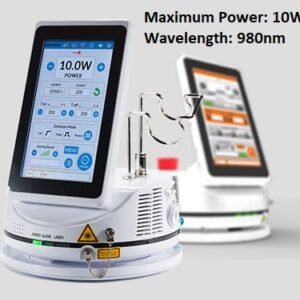Laser Treatment for plantar fasciitis Issue
Plantar fasciitis is one of the most common causes of heel pain. It involves inflammation of a thick band of tissue that runs across the bottom of each foot and connects the heel bone to the toes (plantar fascia).
The cause of plantar fasciitis is poorly understood. It is more common in runners and in people who are overweight.
When it comes to the disease’s symptoms, Plantar fasciitis typically causes a stabbing pain in the bottom of your foot near the heel. The pain is usually the worst with the first few steps after awakening, although it can also be triggered by long periods of standing or when you get up from sitting.
Most people who have plantar fasciitis recover in several months with conservative treatment, such as icing the painful area, stretching, and modifying or avoiding activities that cause pain. Severe cases, however, might necessitate medicinal treatment like laser therapy.
Low Laser Therapy in particular uses both red and infrared light to relieve pain, decrease inflammation and accelerate healing.
Treatments last between 8 and 20 minutes depending on your injury and the body part being treated.
Nevertheless, it is important to note that the quality of the laser machine used for treatment has been a determining factor that strongly impacted the recovery quality and duration.
Relatedly, the Physiotherapy Diode Laser System. SIFLASER-1.41 has been recurrently used by a number of specialists as it proved its high efficacy in treating plantar fasciitis issue.
Indeed, this Laser therapy machine has a wide range of clinical applications, including inflammatory disorders such as plantar fasciitis.
With a low-level 10W laser power, The device is mainly being used for heel pain relief.
First, it has an anti-inflammation effect as it causes vasodilation, but also because it activates the lymphatic drainage system (drains swollen areas). As a result, there is a reduction in swelling caused by the inflammation.
As for pain issues, Laser therapy has a high beneficial effect on nerve cells which block pain transmitted by these cells to the brain and which decreases nerve sensitivity. Accordingly, due to less inflammation, there will be less pain.
plantar fasciitis is not a very serious issue. Still, serious complications can occur. For that reason, patients should always be ready for treatment alternatives, especially the laser-guided one being most suitable for these cases. Using the SIFLASER-1.41, in fact, however, should help plantar fasciitis patients get reassured and less sensitive to pain as long as this device provides them with a pain-free treatment that will effectively restore their physical function.
Reference: Plantar fasciitis
Disclaimer: Although the information we provide is used by different doctors and medical staff to perform their procedures and clinical applications, the information contained in this article is for consideration only. SIFSOF is not responsible neither for the misuse of the device nor for the wrong or random generalizability of the device in all clinical applications or procedures mentioned in our articles. Users must have the proper training and skills to perform the procedure with each Laser system.
The products mentioned in this article are only for sale to medical staff (doctors, nurses, certified practitioners, etc.) or to private users assisted by or under the supervision of a medical professional.

